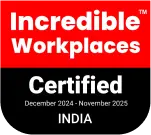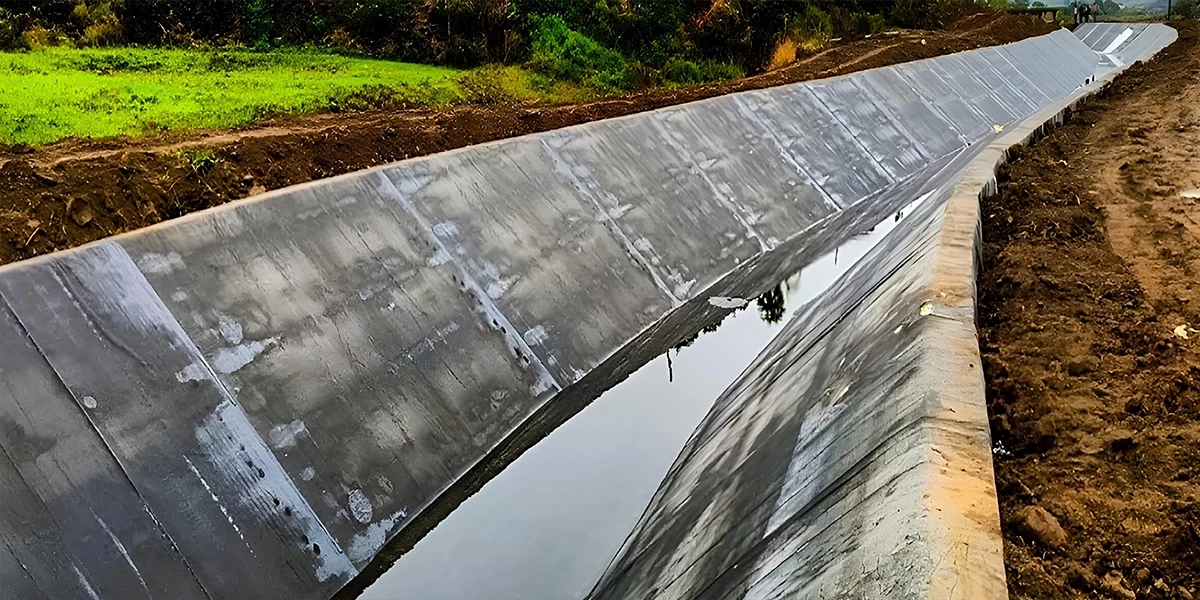

Canal lining is essential in enhancing efficiency and sustainability in water conveyance systems. In irrigation, drainage, and even in urban water supply, selecting the appropriate type of lining material can greatly influence the efficiency of the project, its long-term life expectancy, and its economy.
At Yooil Envirotech, the global innovator of solutions in water management, we recognize the importance of selecting the most appropriate canal lining design in accordance with the needs of your particular project. This blog introduces an age-old argument- Concrete lining vs other common lining materials, and helps you decide which option best suits your project.
Before comparing the materials used in canal lining, it is important to know the purpose of canal lining. Unlined canals are subjected to water seepage problems, erosion, weed growth, and structural instability. The right canal lining helps project managers to achieve the following:
The right lining material forms a tough, waterproof seal that maximizes water flow and minimizes stress in operation.
The type of the canal lining is selected based on a number of factors such as the soil conditions, budget, availability of water, and environmental concerns. The most popular ones are:
Now consider Concrete Lining, and how this compares with the other options.
Concrete lining is one of the old-time favorite solutions, and so it should be. Concrete is the best-known, very strong, durable, and low-permeable material that can be used to protect a canal of any size.
However, like any material, concrete has its drawbacks.
High Initial Cost: The upfront investment for concrete materials, formwork, and skilled labor can be significant.
Cracking Potential: In areas with soil movement or extreme temperature variations, concrete may crack, leading to maintenance issues if not designed properly.
Environmental Impact: Concrete production has a notable carbon footprint, making it less desirable for projects with strict environmental sustainability goals.
Beyond concrete, modern projects often explore alternative canal lining types, such as geomembranes or clay linings, depending on project conditions.
These synthetic liners are widely used in projects where flexibility, quick installation, and cost-effectiveness are priorities.
Advantages:
Limitations:
For areas with readily available clay soil, compacted clay offers a natural, low-cost solution.
Advantages:
Limitations:
These options offer a balance between flexibility and durability but may not match the longevity or impermeability of concrete or geomembranes in certain environments.
Choosing the best canal lining design is not a one-size-fits-all decision. It depends on several project-specific factors:
For large-scale, permanent canals where strength, low seepage, and durability are essential, concrete lining remains a top contender. However, for temporary, cost-sensitive, or environmentally delicate projects, alternatives like geomembranes or clay linings may be more suitable.
At Yooil Envirotech, we pride ourselves on offering customized, cutting-edge water management solutions, including expert consultation on canal lining types, designs, and installation. With decades of global experience, our team helps you navigate the complexities of material selection to ensure your project meets performance, sustainability, and budget targets.
Whether you're considering concrete lining, geomembranes, or innovative hybrid solutions, Yooil Envirotech delivers engineering excellence tailored to your needs.
The decision between concrete lining and other materials is more than just a technical choice—it's about ensuring your water infrastructure is efficient, reliable, and sustainable for the long term. Partner with Yooil Envirotech, and let our expertise guide you towards the optimal canal lining design for your project.
Efficient canals. Sustainable solutions. Yooil Envirotech.
